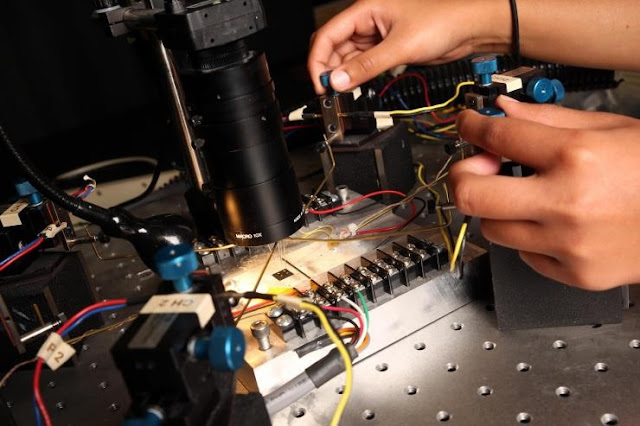With Wearable Thermoelectric Generators, a continuous monitoring of the vital data is possible for athletes and patients. The difficulty is to supply the devices with power permanently. The Wearable Thermoelectric Generators with 40 mW of continuous power, which is worn along with the regular clothes, solves the problem.
Supported by Air Force Office of Scientific Research (AFOSR) and by PepsiCo, Inc., this research has paved a way to better understand the electronic and optical properties of polymer-based materials. A team of researchers from the Georgia Institute of Technology, under the leadership of Professor Shannon Yee, has developed a Wearable Thermoelectric Generators that is both light and flexible and uses the body's heat to generate electrical energy. The thermal generators were applied both to organic and inorganic substrates. However, the polymer variant achieves a significantly lower output power. The performance of the inorganic variant, on the other hand, was satisfactory, but the prototypes were rigid, comparatively heavy and therefore not usable.
The team of Georgia Institute of Technology around Professor Shannon Yee has now developed a Wearable Thermoelectric Generators method in which a p-type and n-type materials are each presented in a pasty form and on a fabric to be printed. The pastes penetrate through the meshes of the fabric and form a layer of Wearable Thermoelectric Generators about one hundred micrometers thick. As a result, several hundred thermoelectrically active points are formed in the combination of p- and n-conducting material on a specific surface of the fabric.
The structure of this Wearable Thermoelectric Generators is stable; it does not require additional ceramic substrates that absorb a large portion of the available thermal energy. Here, the fabric itself serves as the upper and lower substrate of the generator between which the inorganic thermoelectrically active materials are introduced; the Wearable Thermoelectric Generators are also flexible. In particular, the weight of the Wearable Thermoelectric Generators in comparison with other systems could be substantially reduced: to about 0.13 g / cm 2. A 10 x 10 cm² Wearable Thermoelectric Generators designed for the power supply of a "smart fabric" produces an output power of 40 mW from the temperature difference between the skin of the wearer and the environment.
Supported by Air Force Office of Scientific Research (AFOSR) and by PepsiCo, Inc., this research has paved a way to better understand the electronic and optical properties of polymer-based materials. A team of researchers from the Georgia Institute of Technology, under the leadership of Professor Shannon Yee, has developed a Wearable Thermoelectric Generators that is both light and flexible and uses the body's heat to generate electrical energy. The thermal generators were applied both to organic and inorganic substrates. However, the polymer variant achieves a significantly lower output power. The performance of the inorganic variant, on the other hand, was satisfactory, but the prototypes were rigid, comparatively heavy and therefore not usable.
The team of Georgia Institute of Technology around Professor Shannon Yee has now developed a Wearable Thermoelectric Generators method in which a p-type and n-type materials are each presented in a pasty form and on a fabric to be printed. The pastes penetrate through the meshes of the fabric and form a layer of Wearable Thermoelectric Generators about one hundred micrometers thick. As a result, several hundred thermoelectrically active points are formed in the combination of p- and n-conducting material on a specific surface of the fabric.
The structure of this Wearable Thermoelectric Generators is stable; it does not require additional ceramic substrates that absorb a large portion of the available thermal energy. Here, the fabric itself serves as the upper and lower substrate of the generator between which the inorganic thermoelectrically active materials are introduced; the Wearable Thermoelectric Generators are also flexible. In particular, the weight of the Wearable Thermoelectric Generators in comparison with other systems could be substantially reduced: to about 0.13 g / cm 2. A 10 x 10 cm² Wearable Thermoelectric Generators designed for the power supply of a "smart fabric" produces an output power of 40 mW from the temperature difference between the skin of the wearer and the environment.








